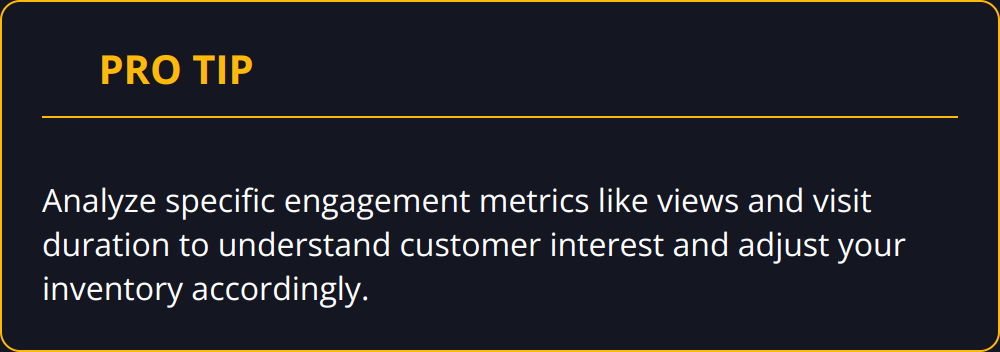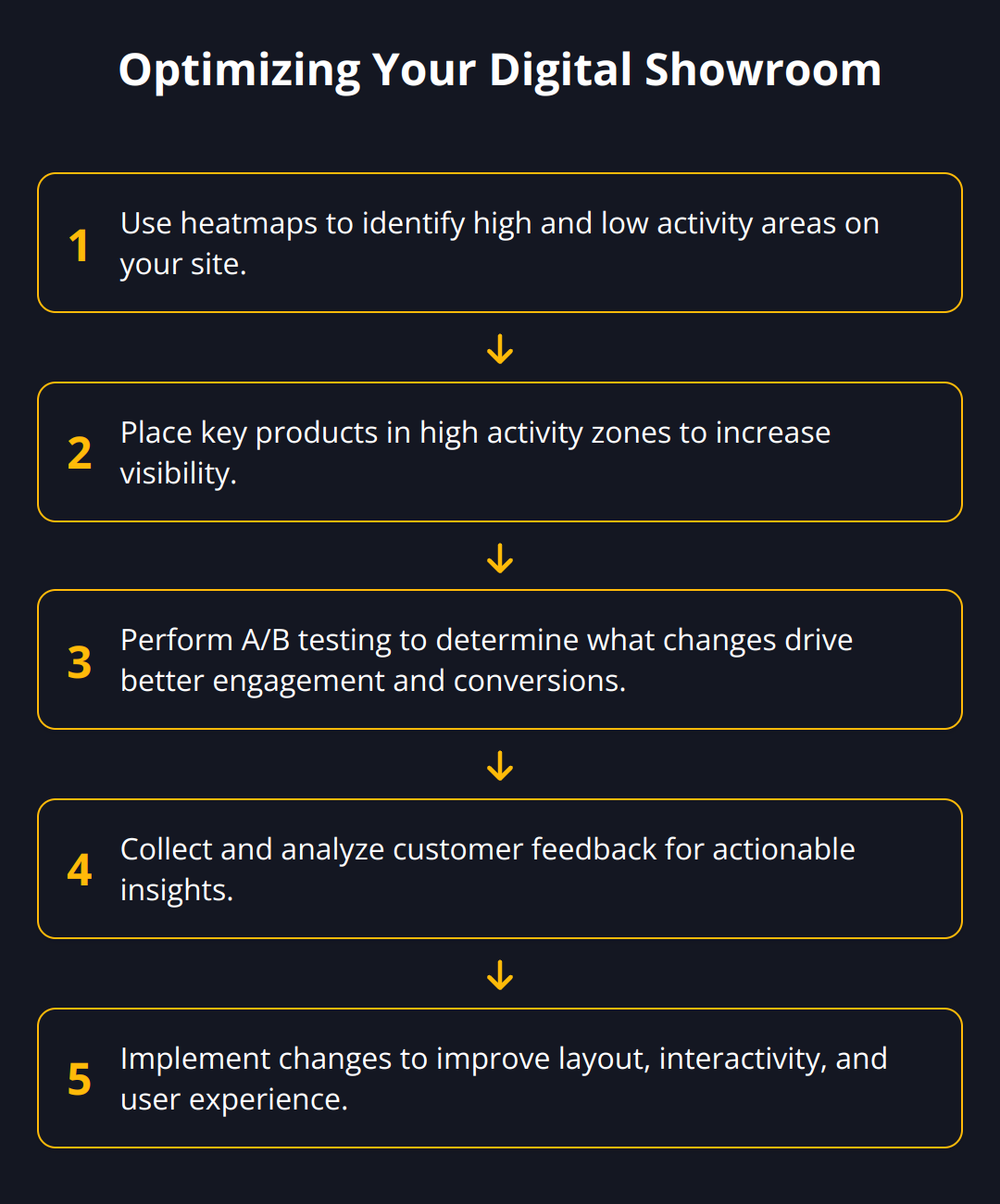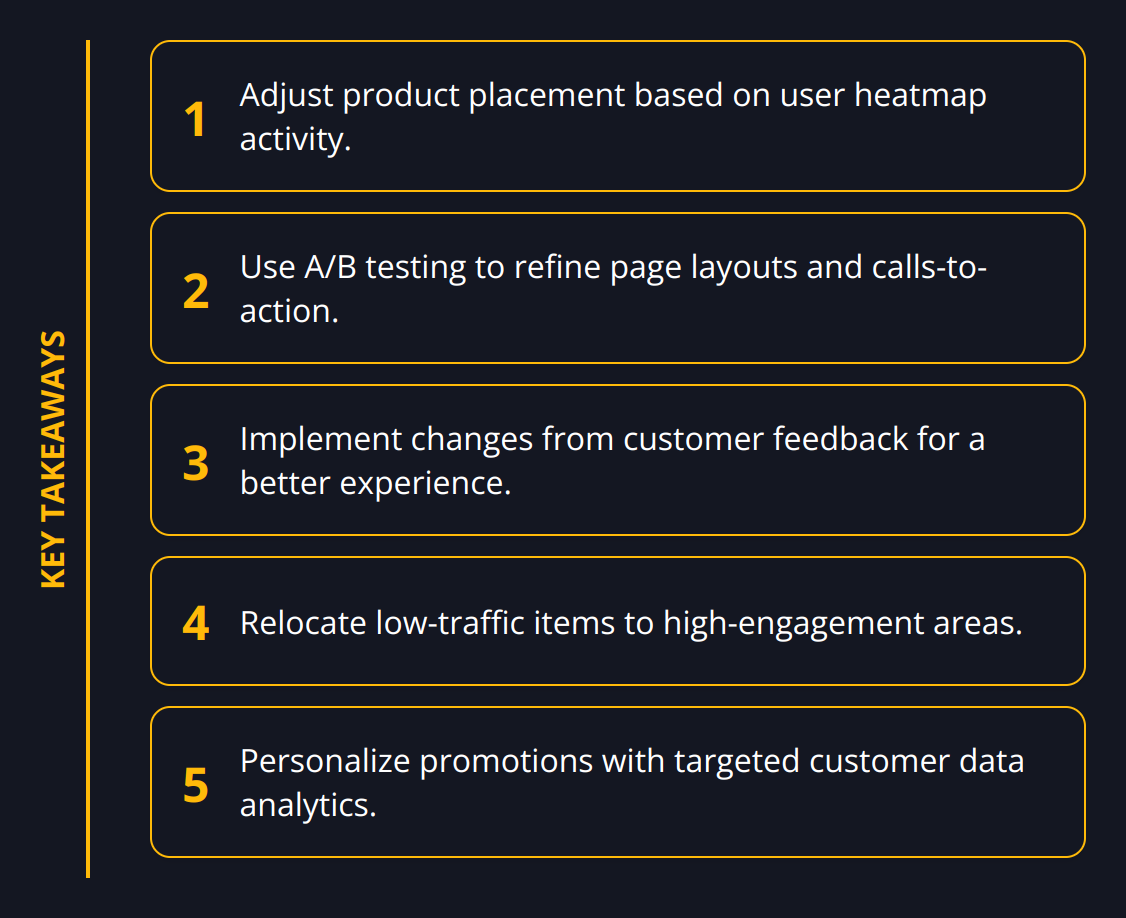We at Newroom Connect understand the retail landscape is rapidly evolving, with digital showroom analytics playing a pivotal role. These analytics offer powerful insights for businesses looking to enhance their customer experience and increase conversions.
By harnessing this data effectively, retailers can make informed decisions that not only improve the digital showroom layout but also optimize product placements and promotions. Here’s a look at how this approach can transform the online retail experience.
Gleaning Insights from Shopper Interactions
In the dynamic world of online retail, the ability to understand and respond to customer behavior is paramount. Retailers who leverage the rich data provided by digital showroom analytics can completely redefine the shopper experience. A strategic approach to analyzing user engagement within your digital space can lead to significantly improved outcomes for both customer satisfaction and your bottom line.
Decoding Engagement Metrics
The bread and butter of digital showroom analytics are the engagement metrics. These include the number of views per product, duration of visits, and actions taken while on a page. Advanced analytics tools go further, tracking mouse movements and clicks, giving a heatmap of where customers’ attention is most concentrated. This provides invaluable information on which products are drawing interest and merit additional promotion or inventory support.
For instance, we know that products with high engagement but low conversion rates may indicate a pricing strategy mismatch or a lack in sufficient product information. By addressing these areas, retailers can directly impact the conversion rates.

Navigational Patterns and Their Importance
Next up is understanding how customers move through your digital showroom. Seamless navigation is key to keeping customers engaged. When analytics show that visitors consistently drop off at a certain point or fail to reach the checkout phase, this signals an interruption in the shopping flow. Identifying and smoothing out these roadblocks will optimize the user journey, leading to increased sales.
Consider incorporating interactive 3D showrooms for an immersive experience that encourages longer browsing times and deeper engagement.
Evaluating Time Distribution
How long a visitor lingers in different sections of your showroom can tell you a lot about their interests and your showroom’s performance. Are they spending a lot of time in one area because they are engaged, or because they are confused? If customers are spending significant time on product pages without adding items to their cart, this could point to a need for more compelling call-to-action prompts or clearer product descriptions.
Time spent can also highlight which types of content are most effective. Are video demonstrations keeping potential buyers on the page longer? What about customer testimonials or reviews? Fine-tuning the content mix based on time spent will create a more engaging and efficient path to purchase.

In summation, retailers who pay close attention to showroom analytics will be better equipped to create an online environment that resonates with their target audience. The data is there; the key is to act on it wisely, always with the aim of providing an exceptional, data-driven customer journey.
Refine Your Digital Space
Digital showrooms are virtual canvases for brands, and the arrangement of elements within them can significantly impact customer interest and interaction. Using analytics to optimize your showroom’s layout and design will not only appeal to your customers aesthetically but also contribute to a smoother buyer’s journey that can lead to increased conversions.
Analyzing user interaction through heatmaps is an excellent starting point for layout optimization. Heatmaps visualize where visitors click, move, and scroll on your site. High activity areas suggest successful engagement, while cold spots may need reevaluation or a design overhaul. If a key product isn’t getting enough attention, consider making it more prominent or placing it within the ‘hot’ zones that garner more views. This strategic placement can draw more eyes to your featured items.

A/B testing is a powerful method for refining displays and improving the user experience. By comparing different versions of a page or element, you can determine what drives higher engagement and conversions. For example, does having a prominent ‘Add to Cart’ button drive more sales than a subtler one? Testing scenarios like these will reveal customer preferences and guide the optimal design strategy for your digital showroom.
Customer feedback is another vital resource for tailoring experiences. Shoppers are more than willing to share their thoughts and feelings about your showroom, and their insights can lead to valuable improvements. Analyze feedback for recurring themes and take action. If customers consistently point out that they love the interactive elements of your digital showroom, it’s a clear signal to expand your interactive 3D services.
To put these insights into action, consider the following:

By taking these data-driven steps, you will create an online space that is not only visually appealing but also fine-tuned to the behaviors and preferences of your audience, making your digital showroom an effective and efficient sales tool.
Optimize Product Highlights
Maximizing product visibility in a digital showroom isn’t just about aesthetics; it’s about strategic placement informed by solid data. Retailers are achieving remarkable success when they use robust analytics to elevate their product placement and promotional strategies. This practical approach can lead to enhanced visibility of key items and a noticeable boost in sales.

When eye-catching products are hidden among less appealing offers or tucked away in low-traffic corners of a digital showroom, their potential to attract customers and drive sales plummets. The solution lies in using analytics to guide the relocation of these products to high-traffic areas. This could mean placing a best-seller on the main page or items with a high margin near top-rated products, thus leveraging existing traffic for increased exposure.
Highlighting doesn’t end with physical placement; dynamic online elements like banners, pop-ups, or interactive points can draw the eye and increase the likelihood that a visitor will engage with the product. But take heed – these features must be used judiciously. Overuse can lead to frustration and a cluttered experience. The data from user interactions will indicate the right balance for your audience.
Additionally, targeted promotions cut through the standard marketing noise, resonating more deeply with customers. The power of personalization cannot be overstated. Data from past purchases, viewed items, and even time spent on particular products can feed into algorithms that produce personalized discounts and deals. This customized approach is proven to foster loyalty and increase conversion rates. Consider integrating a digital twin analytics solution that can provide precise insights into customer preferences, allowing for even more effective personalization.
For actionable insights:
-
Relocate underperforming products to areas where analytics have shown high customer traffic.
-
Introduce interactive elements like pop-ups or banners for highlight products but monitor user response to avoid overdoing it.
-
Craft personalized promotions using customer data to encourage sales and build loyalty.
Retailers are discovering that analytics-driven product placement and promotions are more art than science. When each decision is backed by data, the results speak for themselves: happier customers and healthier sales figures. The digital showroom becomes not just a place to display products, but a finely-tuned machine that actively engages customers and guides them to a purchase.
Remember, the target isn’t just to attract eyes; it’s to convert interest into action. Data gives retailers the insight to do just that. By acting on these insights and continuously refining strategies based on analytics, retailers can expect to see significant growth in customer engagement and sales. After all, in a world where every click can be tracked and analyzed, intuition can only take us so far. It’s time to let data lead the way.
Final Thoughts
Our exploration of digital showroom analytics has uncovered their immense value in the retail sector. Data-driven decisions have emerged as fundamental for businesses aiming to lead the market. The insights gained from showroom analytics not just illuminate customer preferences but are instrumental in shaping strategies that can make or break the online retail experience.

The potency of analytics lies in their ability to turn vast amounts of data into actionable guidance. These insights enable retailers to adapt and evolve, turning digital showrooms into arenas of continuous learning and improvement. Making meticulous changes based on consumer behavior ensures that digital spaces cater more efficiently to both current and potential customers.
Key outcomes of an analytics-informed approach include:
-
Enhanced user experiences, driving satisfaction and loyalty.
-
Improved product engagement through strategic placement and interaction.
-
More effective marketing and promotional campaigns tailored to target audiences.
-
Ongoing evolution of the virtual retail space drawing from real-time user feedback.
It becomes increasingly clear that mastering the art of analytics is critical for anyone operating in the digital retail domain. Adopting a software platform like newroom connect equips businesses with advanced tools to create engaging and personalized virtual experiences—ones that align with the insights gained from analytics and consumer feedback.
By prioritizing a data-driven mindset and employing the tools at our disposal, retailers can look forward to not just meeting but exceeding the demands of the sophisticated online shopper. With continuous learning and agile adaptation, the digital showroom is positioned to be an ever-evolving space of endless possibilities and growth.


